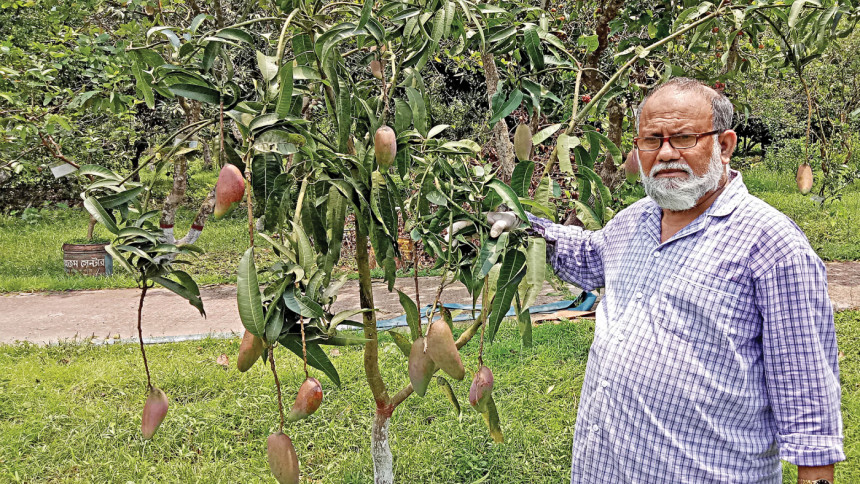3 new mango varieties to tickle the taste buds

Researchers at Bangladesh Agricultural University's (BAU) Germplasm Centre have developed three new varieties of mangoes this season.
The centre, one of the world's largest fruit repositories, is now enriched with 25 local and foreign mango varieties, said Prof Dr Abdur Rahim, project director of the centre.
The three mango vareities (BAU-23, BAU-24, BAU-25) were collected from Vietnam, Philippines and Thailand in 2012 and have been developed at the centre after around six-year long research, Dr Rahim said.
Along with these three new varieties, another 10 varieties are being developed. These new varieties are largely being developed at farmers' level. Some 200 saplings were distributed among 50 farmers to cultivate. The farmers were trained this season.
These new varieties are expected to see large scale cultivation within the next three years, said Dr Rahim.
A farmer can plant 150-200 saplings on 33-decimal land. Every plant is expected to bear 30-40 kg fruit within four years. Every kg is expected to sell at around Tk 200. Each mango is estimated to weigh 500-700 gm.
At the end of the summer, the season for mangoes, a fruit crisis prevails in the market. This is where these mango varieties will step in. Available from July to September, these mangoes will ensure that the fruit and its nutritious values will be available throughout the year, hoped Dr Rahim.
Shahjahan Ali Badsha, a fruit orchard owner from Pabna took 10 saplings after finishing his training. He has been raising the saplings ever since and said he is happy seeing his trees starting to bear fruit. If production is profitable this season, he will go for large-scale cultivation from next season, he said.
The country's soil is fit for cultivation of these mango varieties to ease pressure on imported fruits, said the director. The production of these fruits could be a catalyst to meet the local demand for nutrition and be a source of foreign exchange as well, the director went on.
The centre started with 74 fruit trees of 10 varieties on one acre of land in 1991. Today, it is on 32 acres of land, with some 11,528 fruit trees of 800 varieties, including 60 foreign varieties. Internationally reputed scientists from home and abroad have visited the centr on different occasions.
Nearly 70 extinct varieties of mango, like boichi, dumur, dewa, paniwala, betul, gab, chalta and arboroi have brought variety to the centre, said Md Moniruzzaman, a research fellow.
Besides mangoes, The centre has also shown its capability to develop foreign fruit varieties, enriched with nutrition, which are in great demand in local markers.
In recent years, the centre have released four new foreign fruit varieties for farmers. Santol from Thailand, Rambutan from Indonesia, Dragon Fruit from Vietnam and Persimmon from Japan have added extra splendour to the huge gardens of the centre.
These South-East Asian fruits have huge demand all over the world. Rambutan is a major fruit export of Malaysia, Philippines and Thailand, sources said.
The centre started researching these fruits in 1999 and went on sapling production in 2007. So far, 100,000 saplings of these fruits have been produced and most of them have been distributed among farmers through various distribution channels, said Dr Rahim.
Some of these distribution channels are: District Nursery Owners Associations, Brac, Department of Agriculture Extension and Bangladesh Agriculture Development Corporation. Thanks to them, the saplings are reaching the farmers' doors, he added.
If the foreign varieties are cultivated widely, fruits will be available round the year and the local demand for nutrition will be met, said Moniruzzaman.


 For all latest news, follow The Daily Star's Google News channel.
For all latest news, follow The Daily Star's Google News channel. 



Comments